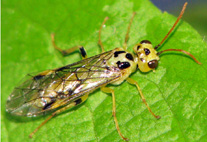Abstract
Limatulichthys nasarcus n. sp. is described as a new species based on 15 specimens from the Ventuari and Caura Rivers in Southern Venezuela. The new species can be distinguished from its only congener, L. griseus, by the presence of anterior abdominal plates half the size of those at center of abdomen (vs. plates similar in size); distinct spots less than half of diameter of naris across entire dorsum, including snout and head (vs. indistinct dorsal spots larger or equal than diameter of naris); lateral portions of head and opercle with dark well-defined spots larger than those on dorsum (vs. spots on lateral portions of head and opercle equal in size to those on remainder of body); snout profile in dorsal view broadly rounded (vs. acutely triangular); head longer (21.4–24.2 SL vs. 17.7–21.0%); and anal fin longer (15.7–18.0 SL vs. 13.7–15.6%). Distinctiveness of the two species is further supported by their non-overlapping distribution in multivariate morphospace. The disjunct distribution of L. nasarcus across both the Caura and Ventuari rivers exclusive of the main Orinoco River channel contributes to a growing body of evidence supporting the historical connection between headwaters of these drainages. The hypothesized existence of a ‘proto-Berbice’ paleodrainage provides one explanation for such a connection.

